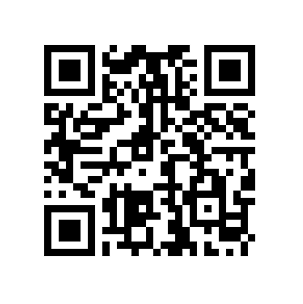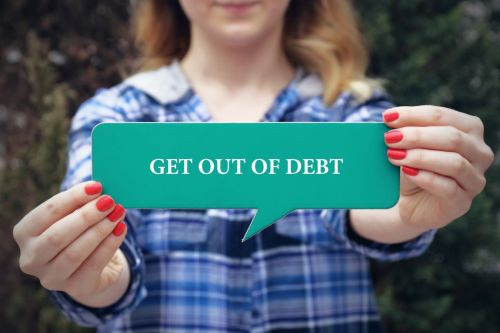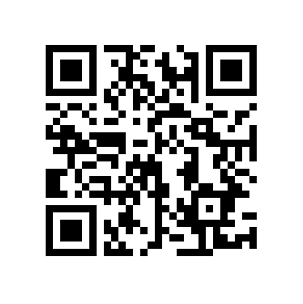Today’s debt-free kids are likely to become tomorrow’s borrowers. However, with some education, teens and tweens can make more informed decisions about debt. With the knowledge and vocabulary they need to understand different forms of debt, kids should feel more in control of their finances when they’re grown.
Ready to start the conversation? This guide will help you define the different types of debt available in Canada, explain how they work, and show your kids how “good debt” can actually help make life better.
Key takeaways
- Good debt is manageable and can provide a return on investment. Bad debt can be difficult to pay down and offers little future gain.
- Secured debt requires collateral, whereas unsecured debt requires no collateral but typically costs more in the long run.
- Revolving debt is open-ended, meaning you can dip into this debt again and again after paying it down. Instalment debt is closed-ended—once it’s paid off, it’s done.
- Most Canadians have one or more of these types of debt: credit cards, mortgages, student loans, personal loans, and/or payday loans.
Good debt versus bad debt
Debt is often broken down into two categories: “bad” and “good.” Which bucket it falls into depends on your reason for taking on that debt. One trick to figuring out whether debt might be good or bad is thinking about the difference between needs and wants.
Take a quick look at some real-life situations. You might need to take on student loans to go to university or college, a decision that has a good chance of improving your life later on. But you likely want to buy the latest smartphone on your credit card (especially if your current phone is still usable). And if you add a cool streaming service, weekly takeout, and a new pair of shoes to that credit card balance, those wants can add up fast, leaving you little wiggle room for actual needs. Now, let’s break it down further:
What is good debt?
While nobody necessarily wants to take on debt, there are many instances where today’s debt can help build a brighter tomorrow. These are examples of good debt.
Take student loans, for example. Debt that helps you get an education could secure you a higher salary down the line. While many parents want to save for their child’s post-secondary education, it’s not always possible to cover all of the costs involved. Student loans also generally come with lower interest rates. Couple this lower cost of borrowing with the likelihood of higher income potential later on, and a student loan starts to look like a good debt.
Mortgage debt can also fall into the category of good debt. If you borrow to buy a home or other property that has a good chance of rising in value, you might be able to sell it for a profit one day.
Entrepreneurs may also go into debt to fund business start-up costs. Once the business does well and earns profits, the owner sees a return on that initial investment. And if their business is a huge success, they could really cash in someday!
The key to keeping debt on the good side is ensuring that the amount you owe is truly manageable. For instance, if you’re thinking of taking on a costly mortgage that eats up most of your monthly income, leaving you with little room in your budget for needs like food and living expenses, then that debt probably isn’t a good idea.
What is bad debt?
Bad debt is typically any debt that becomes tough to repay and doesn’t add value for your future.
Think about credit card debt. Charging takeout from food delivery apps when you already have food at home is considered bad debt because that delivered meal isn’t really a necessity. (That’s not to say you should never enjoy takeout; rather, this luxury should be budgeted for and paid off by the end of the month.)
The same goes for clothing hauls from your favourite online shops, monthly streaming services, and vacations with friends and family. These are fun things to do when you’ve figured out how to save money and have room to treat yourself. But if they all go on a credit card, or require you to tap into a personal loan, these items can be pretty painful to pay back for months and months with added interest costs.
Bad debt can also hurt your chances of getting a great deal on good debt in the future. If you’re unable to make even minimum loan payments on time, or are stuck carrying a high debt-to-credit ratio each month, you could be lowering your credit score. Lenders look at this number when they’re deciding whether you’re able to handle a car loan or a mortgage, and a poor score can bump up the interest rate you get on a personal loan (resulting in higher borrowing costs).

What are some different forms of debt?
Not all debt is created equal. Different forms of debt have different repayment schedules and/or lending limits. Some types, such as secured loans, are higher stakes. (In other words, a lender can take the asset you’re trying to pay off if you miss payments.) Knowing how each debt functions can help you make informed decisions later on.
Secured debt
Secured debt means a loan has been secured against an asset of value, such as a house or car. This asset is also called “collateral.” A secured debt means less risk for the lender—if the borrower can’t repay the debt, the lender can simply seize the asset and sell it off.
While putting up your beloved belongings as collateral might sound intimidating, it can be beneficial for a borrower, too. Having collateral to offer might allow you access to a larger loan amount, a lower interest rate, or both.
Unsecured debt
Unsecured debt doesn’t require collateral. Instead, the lender will look at your income and credit score and make a decision based on your repayment history and any debt you already have. The better your credit score, the better the loan offer is likely to be.
Payday loans, credit cards, and some personal loans are examples of unsecured debt. You, the borrower, usually pay a higher interest rate on these loans than on secured debts, which protects the lender in case you miss a payment or default on the entire balance.
There are some serious downsides to missing a payment on an unsecured debt. First, it generally stays on your credit report for six years and could lower your credit score. Second, if it’s a revolving loan, the lender might freeze your account after a certain number of missed payments, leaving you without access to more credit (and you’ll still be on the hook for those missed payments). Third, if you continue to miss payments, your debt could be sent to a collections agency, which is likely to damage your credit score. And finally, you could even face a lawsuit from the lender.
The takeaway: Always make at least the minimum payments on an unsecured loan.
Revolving debt
Also called open-ended debt, revolving debt is pretty much just revolving credit. In most instances, it comes in the form of credit cards or a home equity line of credit (HELOC). Like a revolving door, this type of credit is available to you again as soon as you pay it off. For example, you have a credit card with a $1,000 limit. One month you max out the card. The next month, you pay off $500. Now that you’ve paid some of the debt down, there is $500 in credit available to you again. But be wary—interest charges on any unpaid balance could build up quickly.
Revolving-credit lenders typically set a credit limit, which is the maximum amount you can borrow (not a goal!), along with a minimum payment amount each month. Whatever doesn’t get paid off at the end of a billing cycle carries over to the next one, and the lender charges interest on that balance.
The good news: Making regular payments on revolving debt could help improve your credit score. Missing payments or carrying a balance, on the other hand, is likely to damage your credit score. And while you have a set minimum payment amount, there is no upper limit—you can repay the entire revolving debt in full any time without penalty.
Instalment debt
Also called closed-ended debt, installment debt has a fixed dollar amount that you have to repay on a regular basis (a.k.a. in instalments). You can’t use this type of loan to buy more once you’ve started paying it down, like you can with open-ended debt. For example, a mortgage is considered an instalment debt because the lender expects a specific amount of money each week or month and the initial sum of money you asked for is all you’ll get during your predetermined loan period.
Instalment debt can be either secured or unsecured. Mortgages and car loans fall under secured debt because the home or car being paid for serves as collateral. (If you can’t make the payments, the lender simply takes back the home or car.) Student loans, on the other hand, are unsecured instalment debt because there is no collateral.
Five common types of debt
Now that we’ve covered forms of debt, here are some of the most common types of debt that people take on. Remember, you can have more than one type at a time.
1. Credit card debt
A credit card may look and swipe like a debit card, but it functions much differently. While a debit card deducts your own money from a savings or chequing account, a credit card provides you access to money on loan from a financial institution.
Credit card debt, a type of revolving loan, can be helpful for making secure online purchases or if you’re temporarily low on cash. The danger with credit cards comes when you’re only making minimum payments and carrying a balance month to month. Since credit cards typically have high interest rates (the typical credit card interest rate in Canada hovers around 20 per cent), they can get costly and overwhelming to pay down. Learning how to use a credit card responsibly is key to avoiding this kind of expensive debt.
Read more about how explain a credit card to your kids.

2. Mortgage debt
The largest financial obligation most people take on in their lifetime is mortgage debt. Across Canada, the average new mortgage loan today is around $375,000—or much more if you live in a major city.
Mortgage debt starts with the principal, or the sum of money a homeowner needs to purchase their house or condo. Repayment of this principal is then spread over a long period of time, typically somewhere between 15 and 30 years. Before applying for a mortgage, however, house hunters have to save up at least five per cent of the price of the home for a down payment. If the down payment is less than 20 per cent of the purchase price, the borrower will also have to pay mortgage-loan insurance on top of their debt payments.
As with any debt, there is interest charged on a mortgage. But, unlike other debts, mortgage interest rates can be renegotiated every few years—and that can impact how quickly the mortgage is paid off. Mortgage interest rates are usually based on the prime interest rate, as well as other factors such as the mortgage length, your credit history, and employment status. You can choose a variable rate, which fluctuates with the market and may increase or decrease, or a fixed rate, which stays the same for the term of the loan. Fixed-rate mortgages tend to be more expensive than variable-rate ones.
You can also adjust the mortgage payment frequency and how often you pay down your mortgage. Options are usually monthly, semi-monthly, biweekly, or weekly. Payments can also be accelerated, meaning a little more goes into each mortgage payment, which shaves time off the repayment schedule.
3. Personal loan debt
A personal loan—also known as a long-term financing plan, instalment loan, or consumer loan—is paid to the borrower in a lump sum and must be repaid on a set schedule. Personal loans can be either secured or unsecured, so interest rates vary. There may also be additional fees on top of interest for a personal loan.
Personal loan debt amounts and repayment schedules vary widely. They can be as small as $100 or as large as $50,000, and repayment periods range from six to 60 months.
Missing payments on a personal loan could do more than affect your credit score. Depending on the terms and conditions of your loan, the lender could request that you repay the entire amount immediately or take you to court for the debt. It pays to read the fine print before you sign.
4. Student debt
In Canada, there are federal, provincial, and territorial financial-aid programs for students who attend post-secondary school. Eligible applicants for government-funded student loans receive a sum based on financial need to cover the cost of tuition and living expenses. There are also student-friendly loans available from financial institutions, which feature low interest rates and flexible repayment schedules.
Student loans are so common that one in two post-secondary students is in debt at the time of graduation in Canada. Since most students are unlikely to earn much during their time at school, they’re typically not required to start paying money back until six months after they graduate.
5. Short-term high-interest debt
Often known as payday loans, these are “bad debt.” Here’s why: They come with incredibly high interest rates and tight repayment schedules, making them difficult to pay off. In fact, some payday loans can charge you the equivalent of 500 to 600 per cent interest! Talk about making a tight financial situation even worse.
Payday loans are basically an advance on an upcoming paycheque. You can typically borrow up to $1,500 at a time, and you usually have to pay back the entire amount, plus interest and any additional fees, by the time that pay cheque arrives.
In Alberta, British Columbia, Manitoba, New Brunswick, and Ontario, borrowers have up to 62 days to pay this debt back. If you can’t pay up, you could be charged even higher fees and interest rates on the remaining balance, which racks up more debt and gets you into a vicious cycle. Payday lenders may continue increasing fees on money owed, contact your friends or family members to get their money, sue you for the balance, or even ask a court to deduct money from your pay cheques.
The bottom line: Consider all other options before taking on a payday loan.
The importance of paying off your debts
Explaining debt to kids is the best way a parent can demystify—and de-stigmatize—borrowing money. If you teach your tweens and teens about the different forms of debt and show them how certain types can be beneficial or harmful, they’ll be able to make more informed choices when it comes time for them to borrow money.
Download Mydoh and help build the foundation of financial literacy for your kids and teenagers.
This article offers general information only and is not intended as legal, financial or other professional advice. A professional advisor should be consulted regarding your specific situation. While the information presented is believed to be factual and current, its accuracy is not guaranteed and it should not be regarded as a complete analysis of the subjects discussed. All expressions of opinion reflect the judgment of the author(s) as of the date of publication and are subject to change. No endorsement of any third parties or their advice, opinions, information, products or services is expressly given or implied by Royal Bank of Canada or its affiliates.
















